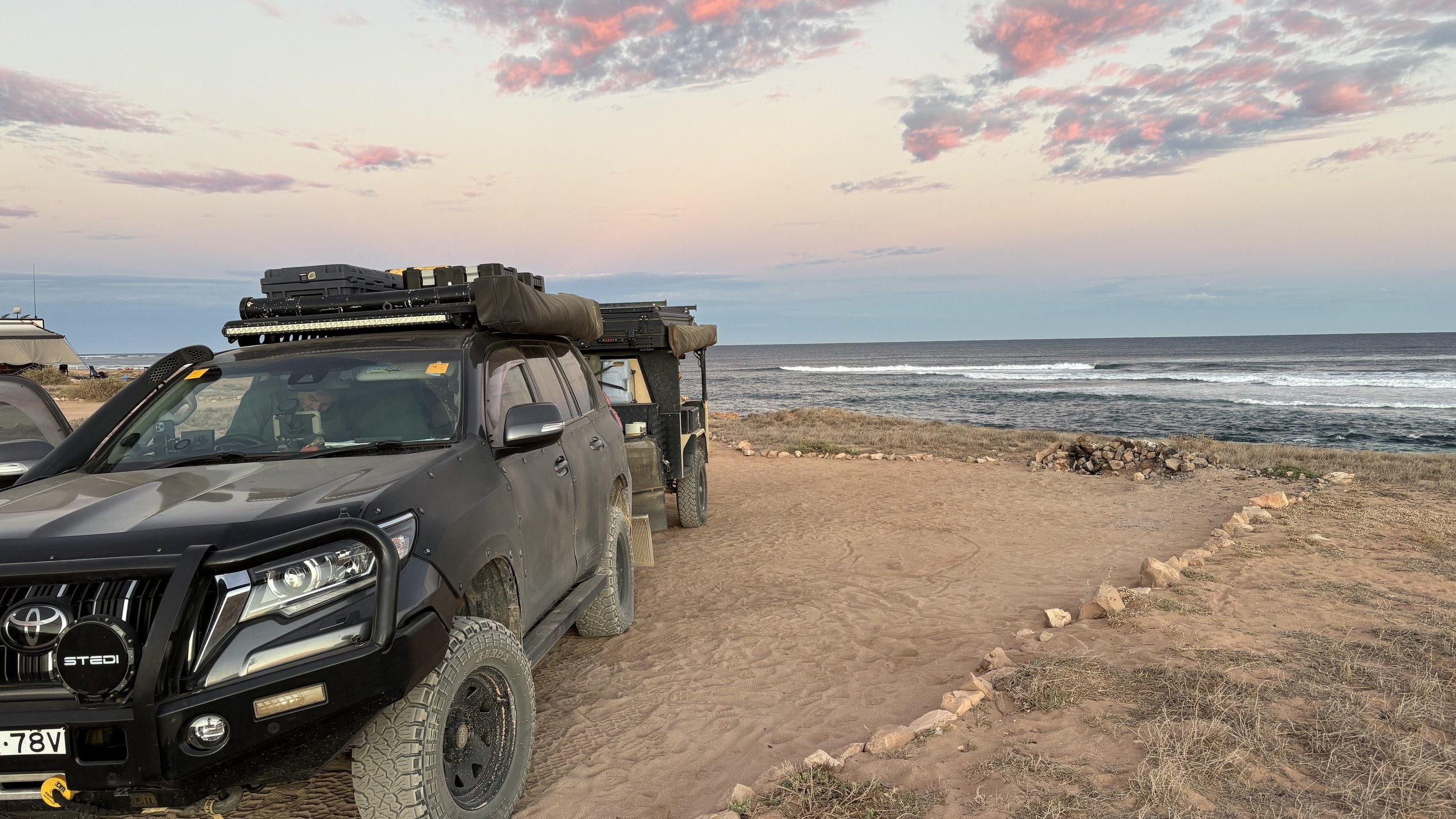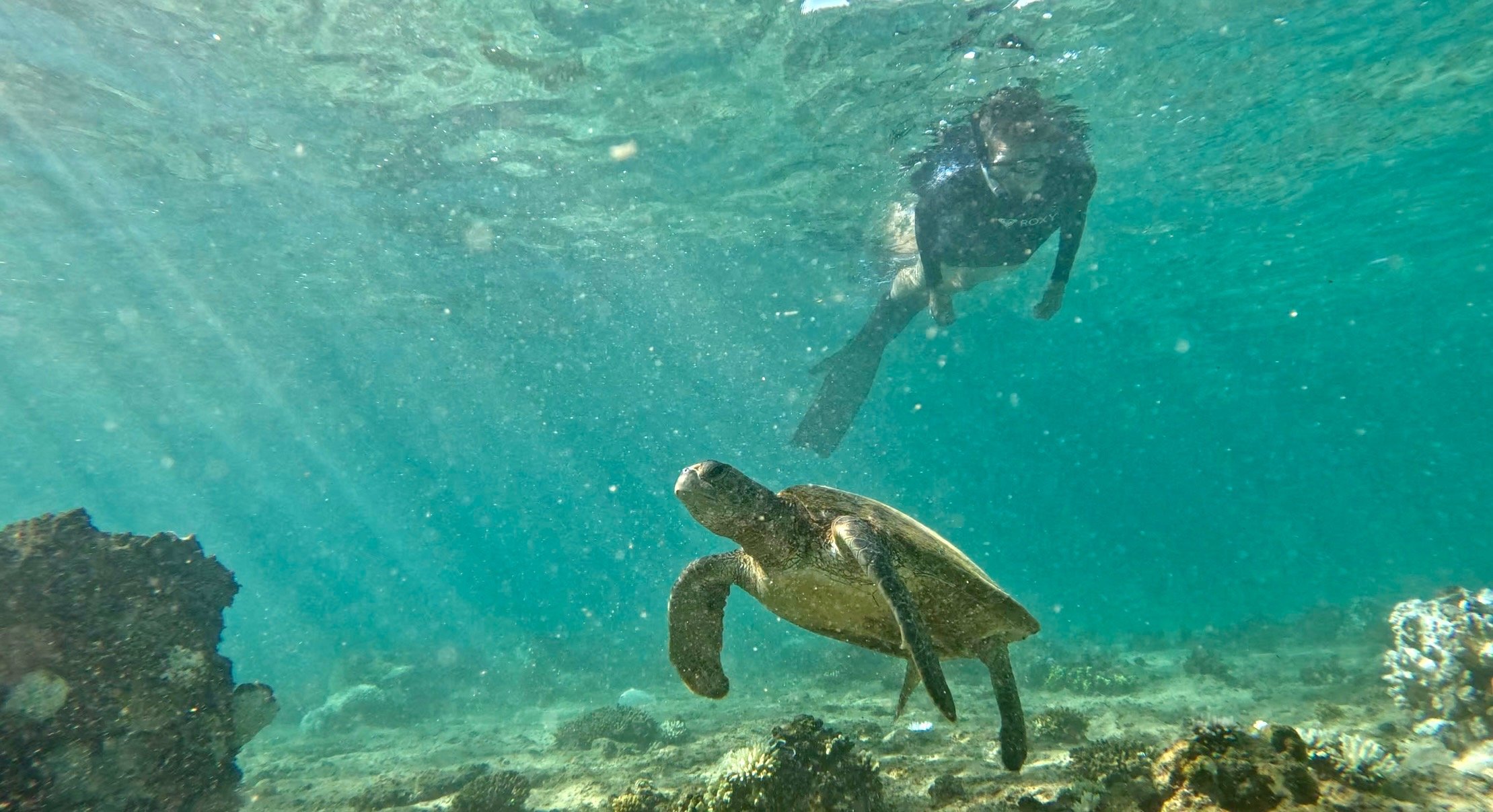Weeks 11 + 12 Ningaloo + Cape Range National Park
These weeks mark our crossing into the red heart of WA. Red rock ranges, red dirt between our toes and arid landscapes will be the order of the days ahead. And the time is flying by. we must remember that before long we will be home (wherever that will be) and this will all be a distant memory.
We are now well and truly on the caravan highway. We have seen camper trailers but we are outnumbered by big rigs and small families, land cruisers and caravans, not to mention the small trucks with tinnies and surf craft on top, and capacity for 400 litres of water, towing dual axle caravans. We have seen only a few grey nomads doing ‘The Lap’. And our preference for national parks or free camps rather than town caravan parks may account for this. It doesn’t seem to be the way of the grey nomad anymore, but a Hipster Highway with slushy machines, digi projectors, fishing drones and various other toys, some even for the kids.
We have seen a lot of Instagram handles. Most travellers in the big rigs seem to have a sticker on their vehicle letting us know who they are. It seems travelling this great continent has changed. A result of covid and the WFH movement? Access to Starlink? Or the mining boom over here?
The adventure camping we’re doing presents challenges: distance from shops and electricity and water, not to mention boggings, corrugations, sand dunes and rocky tracks. Although we are engaging with beautiful landscapes, we are doing hard camping. Remote and rugged, it takes its toll on our bodies which often feel sun scorched, sandy or chalky, as well as the impact on the car. This could account for the dearth of the stereotypical grey nomad. Young families seem more likely to be willing to chase the adventure.
After Kennedy Range, before heading to Exmouth and the Ningaloo coast, we spent a few days at Gnaraloo Station south of Coral Bay, right on the beach. It was a disappointing stay. A surfing mecca, the beach and waves were spectacular but I found that people were less friendly here. Still picturesque, with dunes to the north and south and east, the camping was dusty and windy. I know, WA is windy. But little things can be the final straw when tired and hot. The bathrooms weren’t very clean, more like the dunnies at Maroubra after a busy Saturday or Sunday on a long weekend. In other places where we have shared bathrooms, the practice has been to mop out the showers when you’re done. Not here.



Also, no camp kitchen. And it was more expensive than a standard campsite or caravan park.
On our way out, though, we caught Red Bluff to the south which was beautiful. Perhaps we should have camped here.
We were happy to move on to Ningaloo stopping in Exmouth for a shop at the very well-appointed IGA, before heading around the peninsula to our first camp in Cape Range National Park. The park has on its western side the Indian Ocean and on the eastern side a red limestone range punctuated with spectacular craggy gorges, home to the black-flanked rock wallaby.
We had eleven nights booked here at three different spots. For those who chatted with Jeremy during the planning stage, he would have told you about how painful it was to book: you book a site 180 days out from travel, at midnight WA time. And the sites book out within moments. We managed to book Osprey Bay, then Yardie Creek and finally Winderabandi.
We snorkelled on our first day at Oyster Stacks and Turquoise Bay, and saw turtles, blue spotted rays and sharks, coral and fish, basking in beautifully warm water, 27 degrees warm!
There are kayak moorings offshore at several places, including at our camp spot, Osprey Bay, which we did in the afternoon, paddling straight into a headwind. Above the sea chop and white caps, we eventually spotted the mooring arriving there after a hard, determined paddle.
More fish, a shark, rays and coral stacks, though I can’t help wondering though how affected the coral has been by ocean warming. While beautiful, there is a lot of white coral and a lot with algae growing on it.
The return was much easier as we drifted back along the reef using the raft as a sail, although I did hit Jeremy on the head with my paddle. An accident, of course. And we were out of the water by this stage so the blood was less of an issue.
We caught up for sunset drinks with Craig and Fran from Darwin who we met on Dirk Hartog. They very kindly shared not one but two of the finest Margaret River wines that we didn’t sample when we were there. I made Indonesian chicken rice for dinner. Quick, easy and delicious.
Day 2, we went on a truly remarkable whale shark swim and dive. To be in the water, only a few metres from such power, grace and beauty is breathtaking. I cried into my snorkel and mask on the first swim with this elegant, enormous creature. Their stunning blue-grey white spotted appearance is like a dot painting, blending with the ocean’s colour. While we were kicking our legs hard to keep up with it, the fish looked to be barely moving a muscle.
Their spots are like our fingerprints, unique and individual to each animal. The largest fish in the ocean, there’s a lot of mystery around them, such as where they go when they aren’t aggregating in one of 40 known places around the globe, like Ningaloo. Not much is understood about reproduction and birthing processes as no-one has ever seen them mating or giving birth.
We were exhausted after the day. It was active in the water, with lots of sun, salt and swimming. We decided on an easy dinner of leftovers, with Jeremy adding some extra flavours for the next level effect.
There are also plenty of gorges and walks here for encounters with ancient places, wildlife and silence. If you are quiet, you can spot the well-camouflaged black-flanked rock wallaby who hop around the rocks more like monkeys than marsupials. And they’re tiny, weighing between three to six kilograms.
Our second camp at Yardie Creek was an excellent base; we were able to paddle up the creek, appreciating the spectacular ospreys and their nests and we also spotted a lot of those gorgeous wallabies.
The silence and colours in the gorge are a balm. We have talked a lot about nature bathing. Being surrounded by bush and bird song and how divine this is. We walked the Mandu Mandu loop track at sunrise, another spectacular wander along a river bed surrounded by glorious red limestone, trees and shrubs, then after a clamber up the escarpment a walk back along the rim of the gorge to the car.
The Yardie Creek gorge walk is another beauty, high above the water, particularly glorious in the twilight hours.


We topped off our time here with a few quiet days at Winderabandi Point at the southern end of Ningaloo.
We were the first onto the beach for the season and the track, being super-soft in the heat, caught us in its clutches, bogging us 50 metres from the campsite. We let the tyre pressures down and made it out fairly easily, only to watch the next two caravaners after us also become bogged. We helped them with our max trax, a lovely group of people from Orange, NSW, an older couple and their daughter and son-in-law. Would the grandparents be doing this without the impetus their kids’ invitation to join them?
Although a beautiful spot, we pulled the pin two days early, keen to see Charles Knife Canyon and Shothole Gorge, well worth the visit at sunrise. This added a night in Exmouth before Bullara Station and Karijini National Park. Of course, a stay in town meant another shop, more laundry and a general tidy up after eight days on the coast.
We were sad to leave.
Ningalo, you’re a dream.



